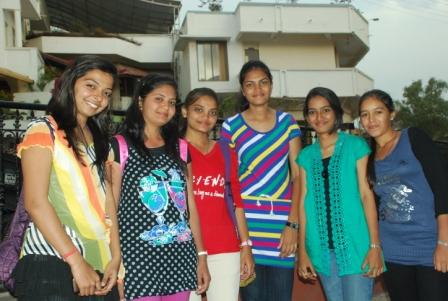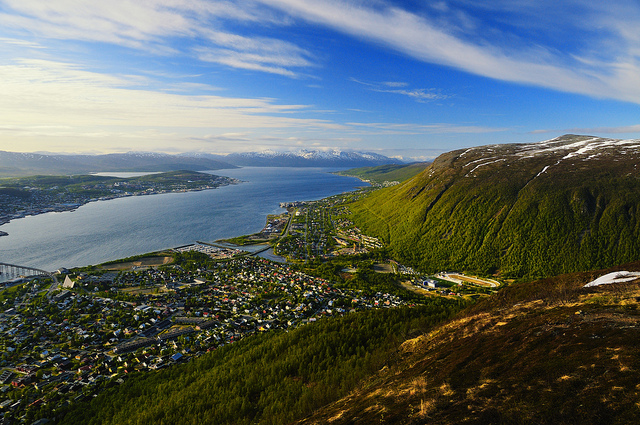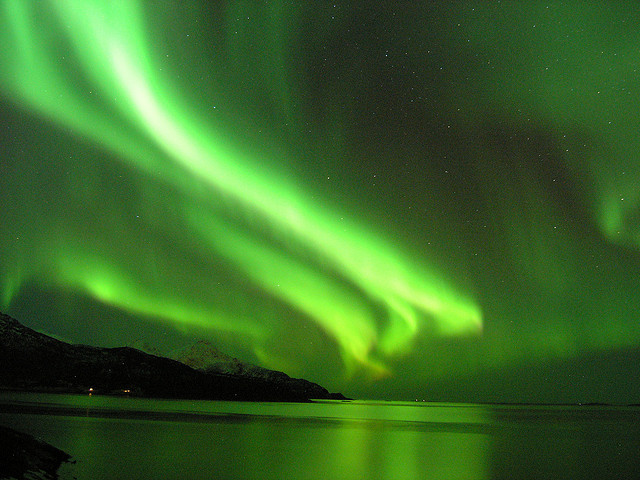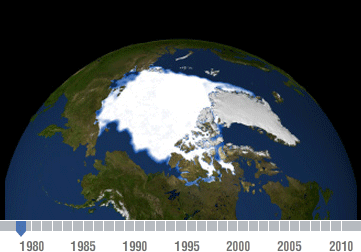Violence against women – figuring out the problem in India

These girls are all studying engineering, a field once dominated by men
What explains violence against women in India? While filming in Rajasthan in northern India, Global Ideas reporter Birgit Maaß tried to find out what ordinary men and women think about the issue – and came across some interesting perspectives and plenty of optimism.
The first time I open a newspaper in Delhi, the Hindustan Times, I notice how just how many reports focus on rape. I had already read a lot about the issue at home after mass protests broke out following the gang rape and death of a student in Delhi in December. I ask myself what the underlying reasons are and what it says about the role of women in society. It’s an issue that I think about a lot.
The first person who has little chance of evading my questions is my cameraman, Manish. He says he has no explanation for it. These men are sick in the head, he says. Women are actually revered in India, Manish adds, saying earlier the gods were all women.
From Delhi, Manish and I take the overnight train to Rajasthan. Rajesh, a friendly trader in dried onions (he says “Germans are our best customers”) is a fellow traveler in our compartment. On a 14-hour-long train journey in a four-person compartment, we naturally strike up a conversation. The next day I risk raising the sensitive issue. He’s at a loss too. “My wife is the boss at home,” he says.
Rajesh lives with his wife, young son as well as his parents. He travels a lot for work, his wife is a homemaker. That’s the best model, the men in the compartment agree, saying the women are happy with it too. “Indian wives are the best,” they say. I’m stunned by their very traditional image of a woman.
On arriving in Rajasthan, we’re received by the Brahma Kumaris, a spiritual community. We’ve come to report on their huge solar project. I’m told that I shouldn’t leave the complex in Mount Abu, a Hindu pilgrimage site, on my own as a woman as for fear of attacks. In Mount Abu, I notice a sign with a helpline number for women who are harassed. A policeman in the village tells me that such signs have put up all across the country since the attack in Delhi.

A poster in Hindi urging women to turn to the police if they are harassed
In the popular coffee shop, Café Coffee Day (its slogan is ‘Good Things Happen Over Coffee), I enter into a conversation with a family. Only the husband speaks to me and his answers turn terse when I broach the topic of women. All he says is that the perpetrators of the Delhi attack should be tried in a court, that’s all. A problem with the role of women in society? No not at all, he says.
To get a sense of what Indian women themselves think about the issue, I stop a group of young girls on the street headed towards me. They’re dressed in modern clothes and stand apart from the women in traditional saris who dominate the streets. They can hardly stop talking – the men think that women who are out in the evenings only want sex, the say. That goes for both older and younger men, the add. The women tell me they would never step out alone after 8 p.m. And even during the day, they consider it safer to be in a group. After all, they add, there’s an old saying, “a lone lady is like an open treasure.”
The girls I speak to are around 18 years old and are engineering students out on an excursion. They tell me that girls today are more successful than boys at school as well as at university. There’s a major social change underway, they say. Earlier, girls would have never entered traditionally male-dominated professions. Indian men, they say, have a hard time getting to used to this development. They told me that during their excursion, the teachers insist that they be back in their hotel by 8 p.m. while the male students are allowed to stay out until 11. “How unfair,” I say spontaneously and they all immediately agree. The budding engineers all want to work later and have equal rights. But they know it will be difficult to do that and some of them joke that it would be best if they learned karate.
Indian society is increasingly fragmenting, pitting emancipation against tradition. But does that explain the violence against women? I can’t exactly judge that. It’s probably just a small part of the problem. But I’ve learned a lot in our short conversation and I’m especially struck by the girls’ optimism.
They want to change society, they all agree. I wish them luck, we take a few photographs and then they quickly say goodbye since it’s getting dark.
Exploring the North – What does Antarctica sound like?
On the last stop of my exploration of the North, I could for a short while feel like a researcher in Antarctica shoveling snow. That’s because when I met Antarctica researcher Tore Hattermann for an interview, he was actually clearing piles of snow from his driveway. It’s routine work to free the sleeping tents after each snow storm in Antarctica, he tells me, as he hands me a shovel. On his expedition to the southernmost continent, he’s been literally working in the middle of nowhere: 70 degrees southern latitude, 600 kilometers from the solid wintering station, 100 kilometers from the coast, right upon the floating ice shelf.
You live here in Tromsö in the Arctic but your research focuses on Antarctica which is at the other end of the planet. How did that come about?
Well, Tromsö is home to the Norwegian Polar Institute where I did my Phd. I now work for the Norwegian company Akvaplan niva. Even along the Norwegian coast, there’s a circulation of water between the deep ocean and the continental shelf – that’s the coastal region that’s covered with sea water. My current work focuses less on the temperature that reaches the ice but rather on the nutrients that reach the fish or on oil pollution. That’s why we’re developing a new model that describes the circulation of water on the Norwegian coast.
What motivates you to research on the topic and develop such models?
As a physicist, I find the whole issue of climate change very interesting and so the subject matter is very motivating. I like the fact that you have to improvise quite a lot when you do field work in Antarctica because things often turn out differently than you expect. So if suddenly the pressure drops during a drilling operation, you have to think about what could be causing it and how you can solve the problem quickly and without the right replacement parts. I enjoy such unforeseen challenges. And it’s exciting to be out there in nature and experience extreme situations.
Antarctica is the coldest continent on earth and is considered one of the most hostile terrains. But how does the continent sound?
Sometimes you hear birds. They live further inland near the Norwegian station on the cliffs. They have to fly 300 kilometers to the coast to search for food. They sometimes land near us on the shelf ice when we’re working on the ground, probably because they think we have food. Otherwise it’s quiet when the weather is good. But during bad weather, you can hardly hear yourself because the wind is so loud there – it’s over a 100 kilometers an hour.
How do you get around in such an environment?
We have mobile trailers on skis that transports 12 tons of equipment. That’s why they can only travel very slowly, around 12 kilometers an hour. For the drilling, we had to travel 600 kilometers from the Norwegian station to the ice shelf.
Isn’t it dangerous to simply drive over the floating ice shelf?
We have security experts with us who first check with the help of satellite images where glacial crevasses are located and accordingly choose the routes. In addition, we have a ground penetrating radar five meters in front of the vehicle. Most of the glacier cracks are one to meters wide and around 25 meters deep. A person could fall into one but the big vehicles can simply drive over it. In a region where there are glacial crevasses, you can only travel in a vehicle with seat belts over the ice, equipped with climbing gear and a pickaxe. We also have training in crevasse rescues where, for example, you learn to build a block and tackle in order to get out of the crevasse.
Do you live in constant fear?
The danger isn’t the cold or the loneliness or broken equipment. Rather it’s relying completely on yourself. There is a first-aid training prior to the expedition but even the doctors say that in case of a serious injury, there is nothing you can do other than wait till help arrives. And that can take too long. But, fortunately, you’re not thinking about it all the time.

With boiling water the researchers drill holes through the ice shelf to measure temperature of ocean water underneath (Credit: Lars Henrik Smedsrud)
What does your work and life out in Antarctica look like?
In the Antarctic summer, the sun shines 24 hours a day. Our contract foresees 12 hours of work a day, there are no weekends. Real work time however depends on the weather. During drilling, we’d know there will be a storm in three days but we need around 36 hours for a drilling hole. You can their either till the storm is over and start after that or finish before the storm breaks and that means working round the clock.
Otherwise, you have a lot of time which you spend with other people in a cramped space. Psychologically, that often leads to strange things. But I was lucky to have sensible colleagues in the field who allow each other their privacy. And you have your own tent where you sleep though you have to dig it out after a snow storm. But it’s not as cold in there as you’d think. My girlfriend Anne, who accompanied the last expedition as a technical assistant, measured the temperature in her tent during good weather and it 28 degrees Celsius in there. The snow was still minus ten degrees cold but when the sun shines it’s really okay. With black woolen underwear, you can easily work outdoors in a T-shirt.
When we stay in one place for a long time, we always set up our flags so that rescue plans can find us in case of an emergency and not land on the snowed under tents or the equipment. You have to call the station every day via satellite phone and tell them everything is okay. If we don’t do that, they come out to us immediately.
When the weather is bad, I usually spend my time reading or analyzing data as soon as the results of the measurements are available. But then at some point you fall into a rut and you can’t motivate yourself to do any of that. Then you simply sit in front of the computer and watch films.
And what do you eat during an expedition. Canned ravioli? Or penguin?
We did consider trying penguin once but it would have led to a huge scandal. It sounds a bit crazy but we travel with a deep freezer container through Antarctica. That’s primarily meant to keep ice cores cold. That’s because it can get up to -1 to 0 degrees warm but the ice cores come from -15 degrees cold ice and need to stay that cold. But we could then store our frozen food in the container. The cook from the Norwegian station precooked food for everyone during the entire duration of the expedition and partly froze it – and we then simply thaw it.
Such a deep freezer container probably uses a lot of energy. What’s the carbon footprint of such a project?
The less said about that, the better. During one of our expeditions, we had 180 barrels of diesel with us. For 11 people, that amounts to emissions of around nine tons of carbon dioxide per person. That’s equivalent to the carbon emissions of a German on average each year or the emissions that a airplane emits from Hamburg to Tromsö and back. But it’s still ten times more than what each person in a “climate neutral” society should be allowed to emit on average.
The Belgians have built a base that is meant to be energy neutral. In my view, it makes little sense to build a showcase for the handful of people who work in such extreme conditions and then to have a society at home that is so wasteful. You could have much higher CO2 savings if you, for example, stopped heating pedestrian zones in Norway. From an energy standpoint, you put in a huge effort for a comparatively smaller benefit that is much more symbolic and is easy to publicize in the media.
In moderate climate zones, saving energy while constructing homes isn’t really a technical challenge anymore and still loads of non-zero-energy homes are still being built. And through the per-capita energy consumption of a few participants of an expedition to the Antarctic ice shelf is terribly high, in the end it’s mainly the three truck motors of our vehicles that use the most fuel during the two months in ice – not to mention the intercontinental flights from Cape Town to Antarctica.
What would you like to discover in the future?
A midterm goal is to find out why some models predict warm water under the Fimbul ice shelf and others don’t. The project officially ended together with my doctorate thesis. But actually “ended” means there are no funds for it any more. Each time you dig a hole as a scientist, you find three places where you should dig further – you’ll always find more questions than answers.
Exploring the North – Looking South: On a bottle of wine and into the ocean
But the Arctic isn’t the only place that’s important for the planet. Just on the other side of the planet, there’s another precious region: Antarctica. Why? Antarctic glaciologist Kenichi Matusuoka from the Norwegian Polar Institute explains this with the help of a bottle of wine.
Imagine holding a bottle of wine. The wine inside the bottle is very precious (and expensive), compared to the rest of the bottle – the glass body and the bottle cork. The wine corresponds to the ice in Antarctica: It is important for the planet as its melting could lead to a rise of 45 meters in sea levels.
Now imagine you turn the bottle upside down – the previously unimportant cork now becomes quite important as otherwise the precious wine would pour out. You can well imagine that the cork is now crucial, whether or not it’s a crumbly old cork that is only plugged loosely in the bottle neck, if you want to find out whether the wine will pour out or not.
That is why scientists focus on investigating the properties and melting behaviour of ice shelves, which is what the cork corresponds to. To be correct: Antarctica does not only have one “cork” like a bottle has, but several – those on top behave differently. But the overall research question is, whether climate change weakens the corks/iceshelves so intensely that they cannot withstand the pressure of the wine/Antarctic ice and finally might let it pass.

Antarctica from space: Blue-pinkish coloured are the ice shelf regions, where ice flows quicker than on land-grounded ice (Photo credit: NASA/JPL-Caltech/UCI)
During my travels in the Arctic region, I actually met a researcher who worked on the dynamics of Antarctica’s ice shelves. Tore Hattermann investigated the melting of a certain ice shelf underside. To get back to the cork analogy, you can imagine that it is rather crucial what size the cork has. If it’s too slim, the wine behind can easily push it away.
In West Antarctica, for example, a change in ocean circulation leads to warmer water below the ice shelves that starts to melt, contributing to more than two thirds of Antarctica’s mass loss. Now, computer simulations predicting that those circulations also transport warm water below the Fimbul ice shelf suggest additional melting. The Fimbul ice shelf is located not in the West, but in the East and has similar geographic conditions as the melting Western shelves have.

Tore Hattermann working on Antarctic ground – attentively observed by a penguin (Photo: Johan Hustadnes)
So, together with other scientists, Tore went on an Antarctica expedition to see whether the simulations are correct and if they could really find warmer water underneath the Fimbul ice shelf. Using boiling water, they drilled holes through 400 meters of ice and passed oceanographic instruments into the ocean below. Over two years those instruments measured water properties: its flow velocity, temperature, salinity and oxygen content. After analyzing the data collection, Tore could prove that the computer simulation was wrong: There was not that much warm water circulating under the Fimbul ice shelf, therefore it wasn’t melting at the extent predicted.
For most people this might seem a disappointment, but for scientists this is rather routine: proving models (wrong). In order to improve or adjust the models in the next step, therefore they depict reality better and predict Antarctic ice shelf melting correctly.

I did not want to deny you this drawing, as sometimes pictures say more than words. That’s this issue explained in a(n abstract) picture. Savvy?
Watch out for the next issue to find out, what the expedition to Antarctica was like for Tore.
Exploring the North – Further North
Arriving in Tromso, Norway, we are now located just at the Arctic’s doorstep. It is a quiet strange feeling, when you suddenly stand at the edge of something, that is normally so incredibly far away. If it’s far away from you as well and you derive from that that you don’t have to care – hang on. You actually should, as the Arctic often is referred to as earth’s air conditioner. And on hot summer days without (working) air conditioning, you feel perfectly well what it is good for.

Thought you might have seen enough snow, so I found this Tromso view of June 2010 for you (Photo: CC-BY-NC-SA-2.0: Nietnagel)
If you look at such pictures of the Arctic region it does not at all like an air conditioning. I was actually suprised that it can be that green in the Arctic region, as I always associate of snow and ice with Artic. What about you?
But this ice is only there in winter time – that’s when it fulfils it’s cooling job, by reflecting 80 percent of sunlight back to space which then cannot heat up the ocean or earth anymore. But from March on, ice starts melting due to increasing temperatures. The decreasing sea ice cover uncovers the dark oceans that absorbs the sunlight instead of reflecting it – the cooling air conditioning turns into a heating facility.
So far, the Arctic yet hasn’t been completely ice-free during the warm summer period. But you might remember scientists worrying last summerabout the small area that is left ice covered: The larger the ice free part, the more heat is absorbed by the ocean underneath – in turn, even more ice melts and a vicious circle starts.
Not on the edge of the Arctic, but on the edge of Arctic research, you find scientists working on how this influences the Arctic environment. Sometimes this influence can even be positive: Researchers recently found that microbes in the soil can fix more carbon in a warmer climate.
But yet, researchers cannot tell how Arctic ice cover will evolve, but they work for example on better models to predict what is going to happen. That is especially important, as many earth systems are connected: A warming Arctic sea also affects ocean currents for example, that – connected to each other – span over the whole planet. In turn, oceans take up less CO2 for example, and in consequence more of this greenhouse gas in the air, warms up the whole planet.
Exploring the North – Lighting up the dark
Being out in the nowhere around Abisko also has a major advantage: due to the very small light pollution, you might get the chance to see what the polar region is famous for: the Northern lights.

When solar particles hit the earth’s atmosphere, sky starts to shine (Photo credit: CC BY SA 2.0: Gunnar Hildonen)
In one sentence: Northern lights occur when cosmic radiation meets the molecules of our atmosphere. In a few more sentences: Such radiation normally comes from the sun, being the closest active star around. When this so called solar wind hits the earth’s magnetic field with more than 700 kilometers per second (!) it’s particles are torn apart into charged particles which spans electric tension over the earth. This tension is discharged as the particles run along the earth’s magnetic field towards the poles, where this field is the strongest (This is also the reason why you can’t see the lights all over the world: the further you move from the poles, the lower is the chance to actually see the lights).
In 150km heigth those charged particles hit the earth’s atmosphere, and thereby pass some part of their energy onto the molecules of earth’s atmosphere, which – finally – stimulate them to glow. Which colour the lights have differs from height and the atmosphere’s composition.
There also might be a yte loose connection to climate change: There is a theory that this beautiful natural phenomenon helps to cool the earth. Due to the ionization of the air, also clouds might be formed and in consequence insulate the earth from warming rays of sunlight.










Feedback